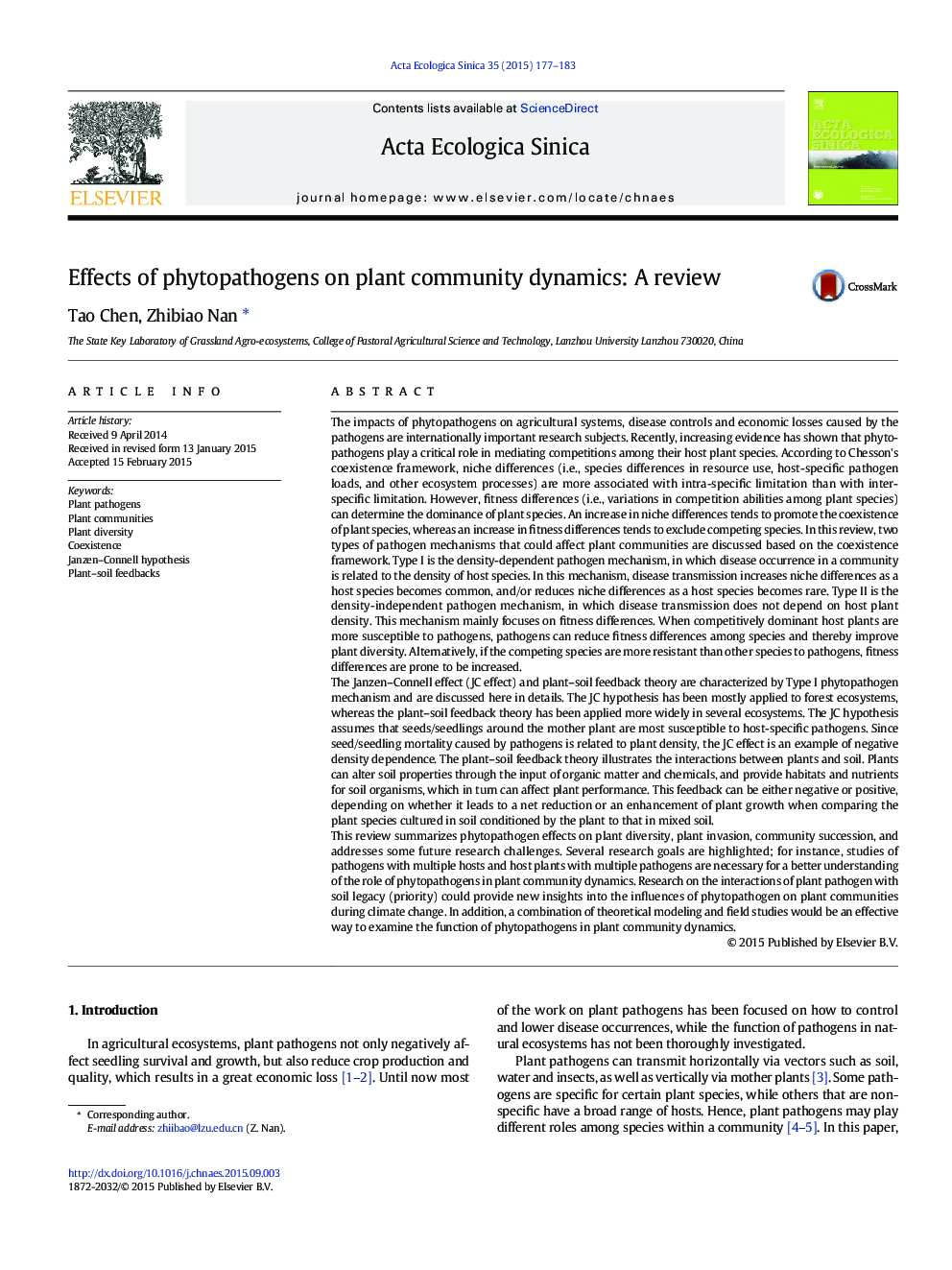| کد مقاله | کد نشریه | سال انتشار | مقاله انگلیسی | نسخه تمام متن |
|---|---|---|---|---|
| 4379828 | 1303942 | 2015 | 7 صفحه PDF | دانلود رایگان |
The impacts of phytopathogens on agricultural systems, disease controls and economic losses caused by the pathogens are internationally important research subjects. Recently, increasing evidence has shown that phytopathogens play a critical role in mediating competitions among their host plant species. According to Chesson's coexistence framework, niche differences (i.e., species differences in resource use, host-specific pathogen loads, and other ecosystem processes) are more associated with intra-specific limitation than with inter-specific limitation. However, fitness differences (i.e., variations in competition abilities among plant species) can determine the dominance of plant species. An increase in niche differences tends to promote the coexistence of plant species, whereas an increase in fitness differences tends to exclude competing species. In this review, two types of pathogen mechanisms that could affect plant communities are discussed based on the coexistence framework. Type I is the density-dependent pathogen mechanism, in which disease occurrence in a community is related to the density of host species. In this mechanism, disease transmission increases niche differences as a host species becomes common, and/or reduces niche differences as a host species becomes rare. Type II is the density-independent pathogen mechanism, in which disease transmission does not depend on host plant density. This mechanism mainly focuses on fitness differences. When competitively dominant host plants are more susceptible to pathogens, pathogens can reduce fitness differences among species and thereby improve plant diversity. Alternatively, if the competing species are more resistant than other species to pathogens, fitness differences are prone to be increased.The Janzen–Connell effect (JC effect) and plant–soil feedback theory are characterized by Type I phytopathogen mechanism and are discussed here in details. The JC hypothesis has been mostly applied to forest ecosystems, whereas the plant–soil feedback theory has been applied more widely in several ecosystems. The JC hypothesis assumes that seeds/seedlings around the mother plant are most susceptible to host-specific pathogens. Since seed/seedling mortality caused by pathogens is related to plant density, the JC effect is an example of negative density dependence. The plant–soil feedback theory illustrates the interactions between plants and soil. Plants can alter soil properties through the input of organic matter and chemicals, and provide habitats and nutrients for soil organisms, which in turn can affect plant performance. This feedback can be either negative or positive, depending on whether it leads to a net reduction or an enhancement of plant growth when comparing the plant species cultured in soil conditioned by the plant to that in mixed soil.This review summarizes phytopathogen effects on plant diversity, plant invasion, community succession, and addresses some future research challenges. Several research goals are highlighted; for instance, studies of pathogens with multiple hosts and host plants with multiple pathogens are necessary for a better understanding of the role of phytopathogens in plant community dynamics. Research on the interactions of plant pathogen with soil legacy (priority) could provide new insights into the influences of phytopathogen on plant communities during climate change. In addition, a combination of theoretical modeling and field studies would be an effective way to examine the function of phytopathogens in plant community dynamics.
Journal: Acta Ecologica Sinica - Volume 35, Issue 6, December 2015, Pages 177–183
